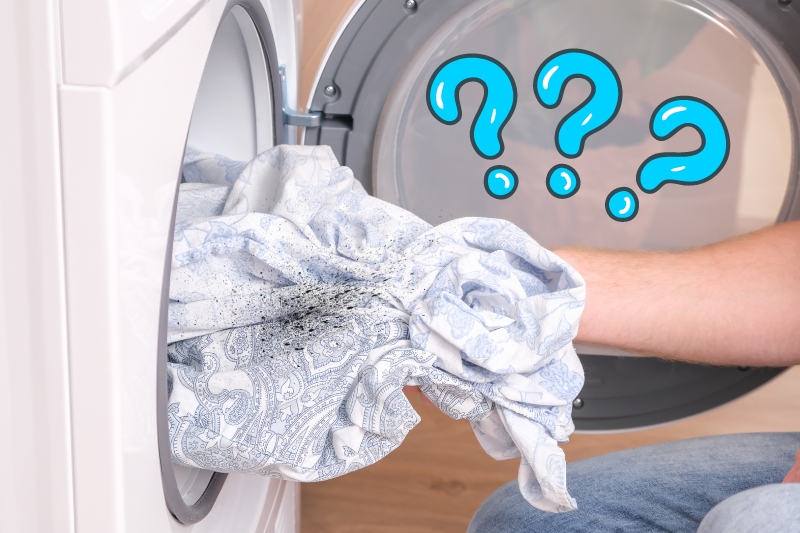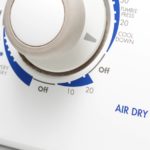So, you’ve got your nice white shirt washed in time for your big day, and it’s been in the dryer for a couple of hours so whip it out, wang on the iron and away you go.
Not so fast, because what’s that on your shirt? Black marks? As Marvin Gaye was prompted to ask in a similar situation on washday in his Detroit semi, what’s going on?
Tumble dryers are a real boon, especially to the time-strapped guy or girl on the go. But there’s a fair amount going on in that usually redoubtable revolver, and sometimes, in all that turning, things can take a turn for the worse.
In this article, we’ll list what’s likely to be behind those black marks, and get into the useful stuff, i.e., what to do about them.
It’s such a pain when our machines rebel against us. Mind you, it’s not like we haven’t been warned. Dismal dystopian doom-mongers have been telling us of the woes to come for years now.
Here are some of the reasons tumble dryers can leave black marks on clothes.
Cause 1: Overheating

In the tumble dryer you’ve got a whole lot of heat going on. There has to be, or that drying won’t happen.
It’s important that only a certain amount of heat is applied, as there’s a limit to what clothes can put up with. Even the hottest hotpants will draw the line at seriously smoking temps.
Overheating can be caused by several things, including the following.
Inadequate venting
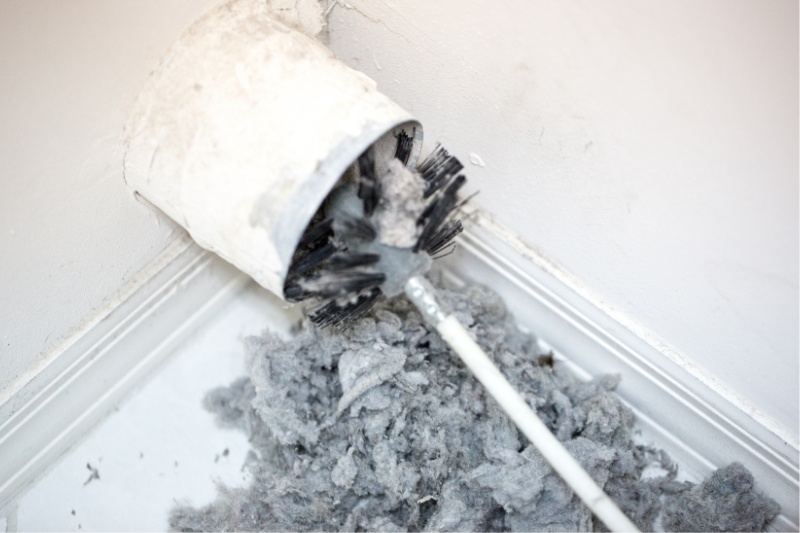
Tumble dryers regulate the amount of heat they’re chucking into those clothes through a number of means, including using a vent to expel excess heat.
If that vent gets clogged, you’ve got a greenhouse situation with knobs on. This can be caused by a build-up of lint that blocks up the vent and prohibits air passage.
End result? Any clothes caught in that hot hangout will suffer heat damage, manifested in scorch marks.
What can you do about the vent being blocked? Clean it to prevent lint build-up, regularly. Note – not all the fixes here will be quite so straightforward, so enjoy this one.
Damage to the blower wheel, cycling thermostat or heating element
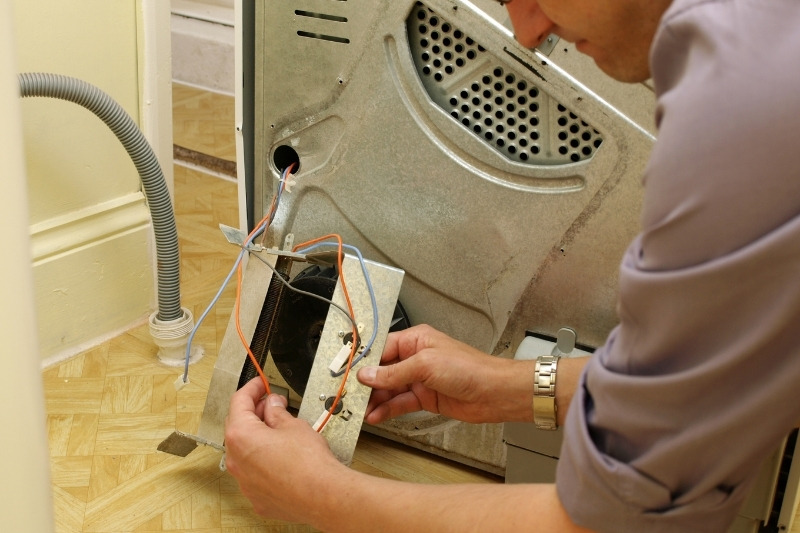
The blower wheel moves the hot air around the tumbler. If it gets damaged, hot air gathers in specific parts of the drum and clothes get singed.
The cycling thermostat turns the heating on and off in response to the temperature in the drum. If it fails, the temperature will carry on increasing without any regulation. Like a bouncy castle playdate with no parental supervision.
The heating element, as you may have guessed, does the actual heating up. It’s designed to stop when it reaches a certain temperature. If it gets damaged, it can keep heating and heating with gay abandon.
These aren’t such easy instant fixes. You’ll need to replace them if they’ve sustained any damage. Start with the tumble dryer manufacturer and follow their advice.
Getting rid of scorch marks
You might be able to shift the scorch marks, as long as they’re not too extensive or too deep, with a 50% hydrogen peroxide solution.
Put the peroxide on another cloth, and lay it on the clothing, then iron with a medium setting. If you’re lucky, the scorch may transfer from the clothes to the cloth.
Cause 2: Oil or Grease
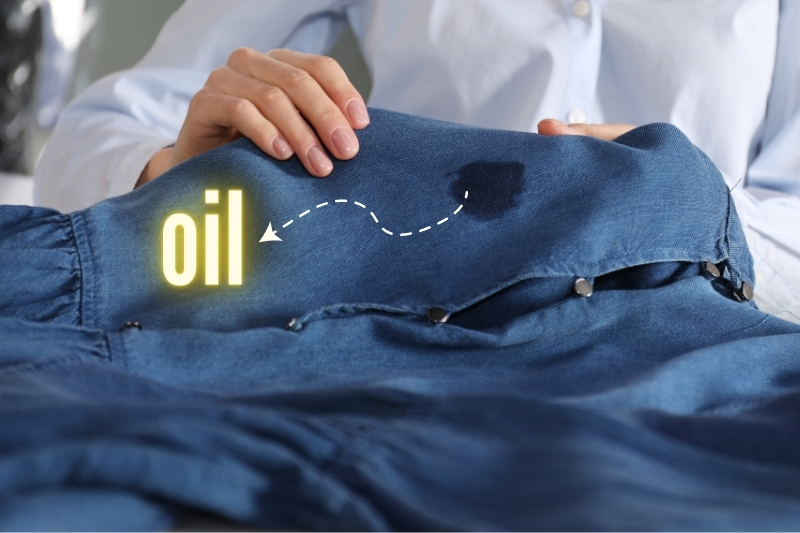
If there’s been work on your tumbler, there might have been left in place some oil or grease, neither of which will be your clothing’s best chum. It’s also a bit of a fire hazard. So, you need to get rid of that stuff immediately.
Use a damp cloth and some mild detergent all around the drum and the inside of the door, together with all bits of trim.
To get oil or grease out of clothes, you’ll need some bicarbonate of soda or talc. Apply all over the marks, then spot treat with washing up liquid. Rinse then hot wash.
Cause 3: Damage to Rollers
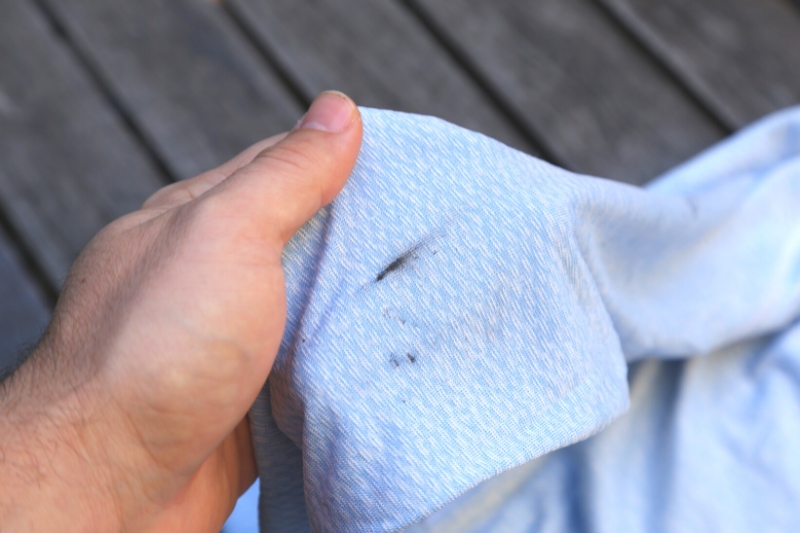
Rollers are the components that sit outside the drum and basically roll it round. They put the tumble in.
If their action is compromised, the drum won’t turn evenly and heat may build up as a result.
It’s possible for clothes to get caught in the growing gap between the rollers and the drum, which can result in marks on them.
To fix this problem, you’ll need to replace the entire roller set. Check with the manufacturer to see exactly what spec you need.
Clothes marked in this way will usually respond well to a warm wash. If on the other hand it looks like they’ve been scorched or marked with oil, you know what to do.
Note that there are lots of components that will wear over time and will cause black marks in a similar way to the way damaged rollers do it.
Examples of these include the drum seal, the gliders, the baffles and the lint screen. Damage to or excessive wear of any of these will mean you need to replace them.
Cause 4: Drum Overload
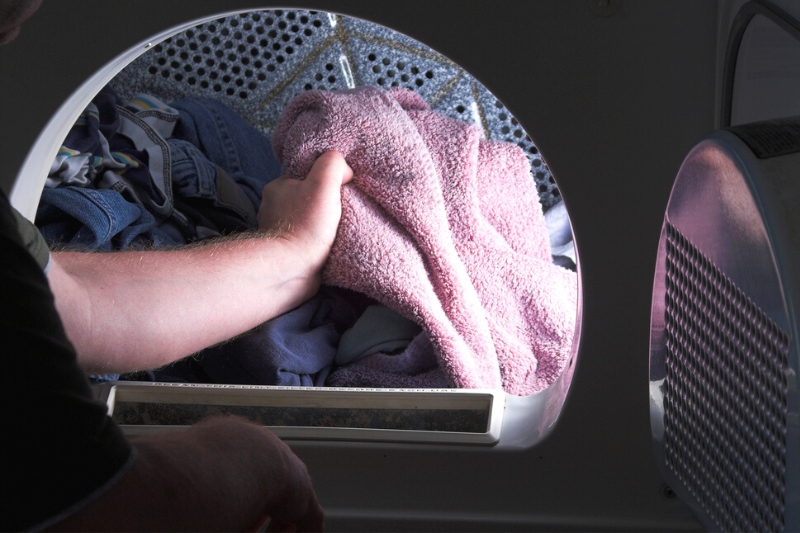
If you try to stuff in too many clothes, there will be uneven drying. This can get really dramatic, with some garments barely touched and others like the Human Torch has been wearing them while working out.
If this happens, just try to rein yourself in when it comes to wanting to dry everything all at once. Be a bit more zen about things. Everything in its right place. All things must pass. Live long and prosper.
Where was I? Oh yes – again, any scorch marks can hopefully be tackled with the method above.
Cause 5: Unwanted Items in the Drum

Sometimes you get stuff in the dryer which really shouldn’t be there. Like if a pen was left in a pocket and is now distributing bright blue pigment all over the place.
Not much you can do about this possibility aside from the obvious, i.e., keep checking the inside of the drum for unwanted items like this.
If you do get a load of ink in there, you can usually get rid of it with rubbing alcohol on a damp cloth.
Once you’ve got all apparent traces off, put in a load of towels that you’re not too precious about. They’ll step up and take on any last vestiges of ink, leaving the machine squeaky clean for the next load.
Clothes that have been inked can benefit from the careful application of toothpaste (do bear in mind that it has to be colourless, and mustn’t be a gel).
Drying Can be Trying
As we’ve seen, tumble dryers have a significant propensity for going wrong, and when they do, your clothes can pay an unsightly price. The most important thing to do is to get into a regular inspection routine. Look before you load.
What’s more, never forget that there are other options. Yes, tumble dryers can get the job done fairly quickly, but drying outdoors is better for your clothes and for the planet.
So, if you have the space, give your clothes a blast of the great outdoors. You’ll find that mother nature is a lot kinder and won’t give your clothes any of that black business. Unless a passing bird’s been eating charcoal, that is.

Martin’s life revolves around films, dogs and food, but rarely all at the same time. At least two out of these three like to give clothes and furniture a hard time, and Martin enjoys discovering and writing about new ways to stop them doing their worst.
